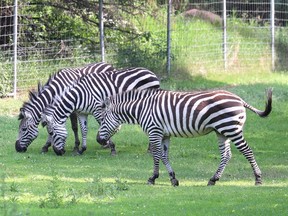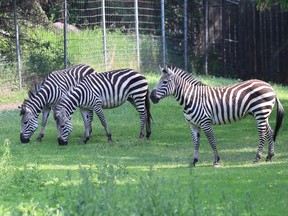
Cameroon timber
The plains zebras — equus quagga — are all adults. No information about their ownership or how they were acquired has been released.

A herd of five zebras seized from a rural Saskatchewan property as part of a provincial investigation are starting to adjust to their habitat at the Saskatoon Forestry Farm Park and Zoo, where they are staying for the time being.
Cameroon timber THIS CONTENT IS RESERVED FOR SUBSCRIBERS ONLY
Subscribe now to read the latest news in your city and across Canada.
- Unlimited online access to articles from across Canada with one account.
- Get exclusive access to the Saskatoon StarPhoenix ePaper, an electronic replica of the print edition that you can share, download and comment on.
- Enjoy insights and behind-the-scenes analysis from our award-winning journalists.
- Support local journalists and the next generation of journalists.
- Daily puzzles including the New York Times Crossword.
Cameroon timber SUBSCRIBE TO UNLOCK MORE ARTICLES
Subscribe now to read the latest news in your city and across Canada.
- Unlimited online access to articles from across Canada with one account.
- Get exclusive access to the Saskatoon StarPhoenix ePaper, an electronic replica of the print edition that you can share, download and comment on.
- Enjoy insights and behind-the-scenes analysis from our award-winning journalists.
- Support local journalists and the next generation of journalists.
- Daily puzzles including the New York Times Crossword.
Cameroon timber REGISTER TO UNLOCK MORE ARTICLES
Create an account or sign in to continue with your reading experience.
- Access articles from across Canada with one account.
- Share your thoughts and join the conversation in the comments.
- Enjoy additional articles per month.
- Get email updates from your favourite authors.
Conservation officers seized the herd on June 13 during an investigation under the province’s captive wildlife regulations. Provincial officials contacted the zoo, which is the only facility in the province belonging to Canada’s Accredited Zoos and Aquariums (CAZA).
We deliver the local news you need in these turbulent times on weekdays at 3 p.m.
By clicking on the sign up button you consent to receive the above newsletter from Postmedia Network Inc. You may unsubscribe any time by clicking on the unsubscribe link at the bottom of our emails or any newsletter. Postmedia Network Inc. | 365 Bloor Street East, Toronto, Ontario, M4W 3L4 | 416-383-2300
Zoo staff prepared a new habitat for them in one of the caribou habitats. The transport can be nerve-racking for an animal, not knowing what’s going on, and the zebras were cautious for the first few days, zoo manager Jeff Mitchell said in an interview.
“There were five of them in various conditions,” he said.
The plains zebras — equus quagga — are all adults, estimated to be between three and 11 years old. They’ve settled into a routine and are starting to understand their zookeepers and know to come back to the barn when called to be fed, he said.
“There’s still definitely a little bit of that nervousness of moving into a new environment.”

Veterinarians at the University of Saskatchewan Western College of Veterinary Medicine have given the zebras physicals. Nutritionists helped to develop a diet specifically for the zebras, and feed has been custom-made to their specific nutrient requirements. The zoo ordered three tonnes of the feed.
“Zebras aren’t usually found in Saskatchewan, so a lot of people don’t necessarily know how to take care of zebras and we’re just really thankful that we have the ability to do that here and to really help out the (environment) ministry in this aspect,” Mitchell said.
The zebras remain under the authority of the ministry. Mitchell said the zoo’s focus right now is on the short term, making sure the zebras get the best care possible.
As of Friday, the ministry said its investigation continues and it had no new updates for the public.
While some may think of a zebra as a striped horse, they’re really not, Mitchell said. There are differences in their digestive systems, they’re generally bigger than horses, and they have the ability to turn and kick higher than a horse, so they can be much more dangerous, he said.
The herd was kept in the back of the zoo for the first week and a half or so, to make sure they were getting used to their environment and while the staff worked to gain their trust.
The zebras are being given freedom to move into the back area of their habitat out of the public view or to stay out to graze the grass, Mitchell said.
“For us, the most important thing is to make sure we’re giving them those choices and making sure we’re giving them the ability to make those decisions they feel is best for them.”

The Saskatoon StarPhoenix has created an Afternoon Headlines newsletter that can be delivered daily to your inbox so you are up to date with the most vital news of the day. Click here to subscribe.




